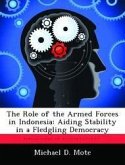This study investigates the desirability of unifying the U.S. Armed Forces into a joint military service. As the U.S. reshapes and downsizes its armed forces for the future, the primary purpose continues to be support for joint operations and a modernization strategy that focuses on increased capabilities. The organization realignment, initiated by the Goldwater-Nichols Department of Defense Act of 1986, forced the armed services to increase joint union and cooperation. However, an over-critical hypothesis suggests that Goldwater-Nichols failed to adequately establish newly defined roles, missions, functions, and failed to properly initiate a future organization for the armed forces in a joint environment. The roles, missions, functions, and service organizations were used to highlight the similarities and differences of the U.S. Armed Forces. The Canadian Forces were also used as a comparison to give prominence to the similarities and differences of an integrated and unified military service.
Hinweis: Dieser Artikel kann nur an eine deutsche Lieferadresse ausgeliefert werden.
Hinweis: Dieser Artikel kann nur an eine deutsche Lieferadresse ausgeliefert werden.








